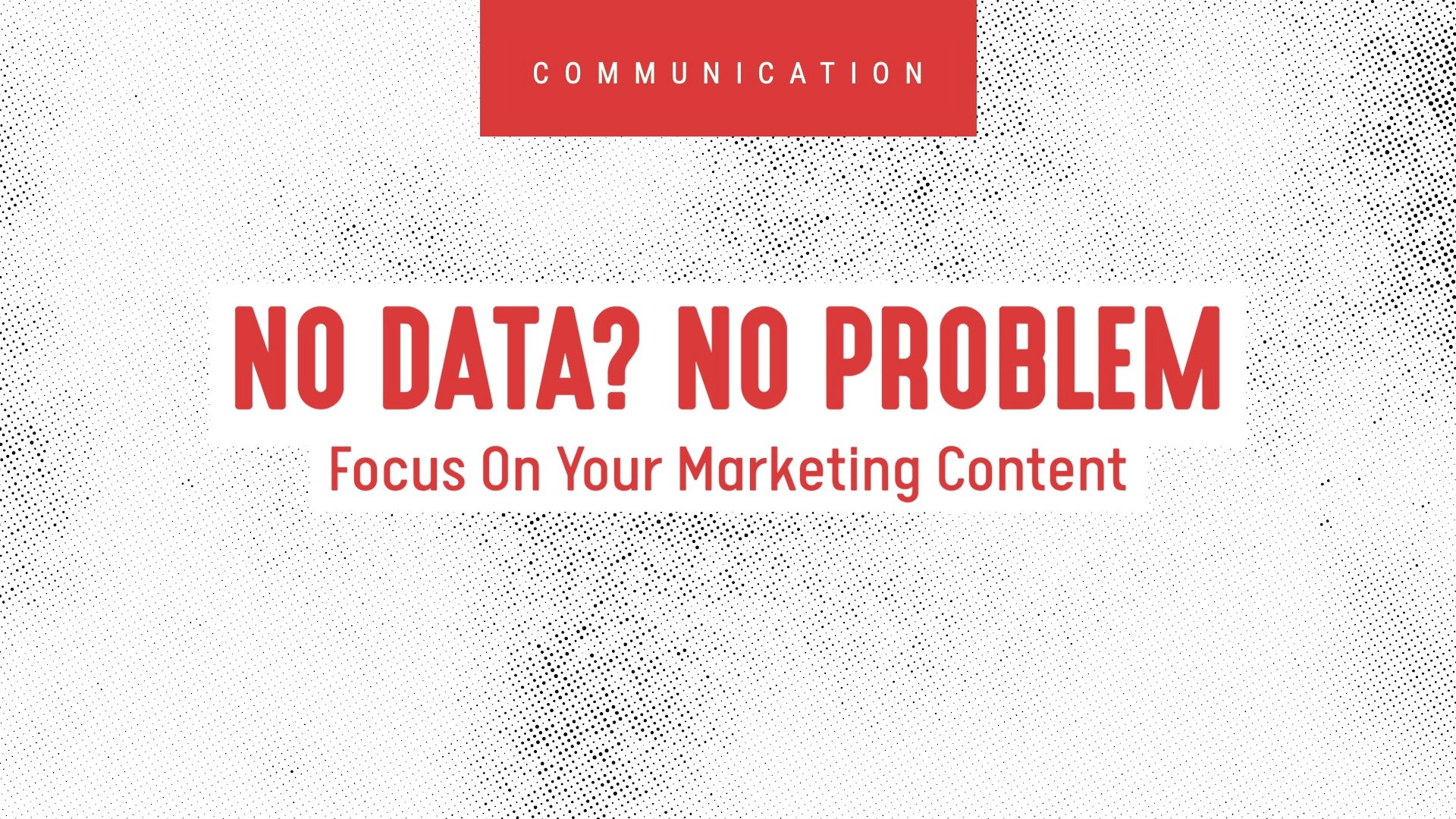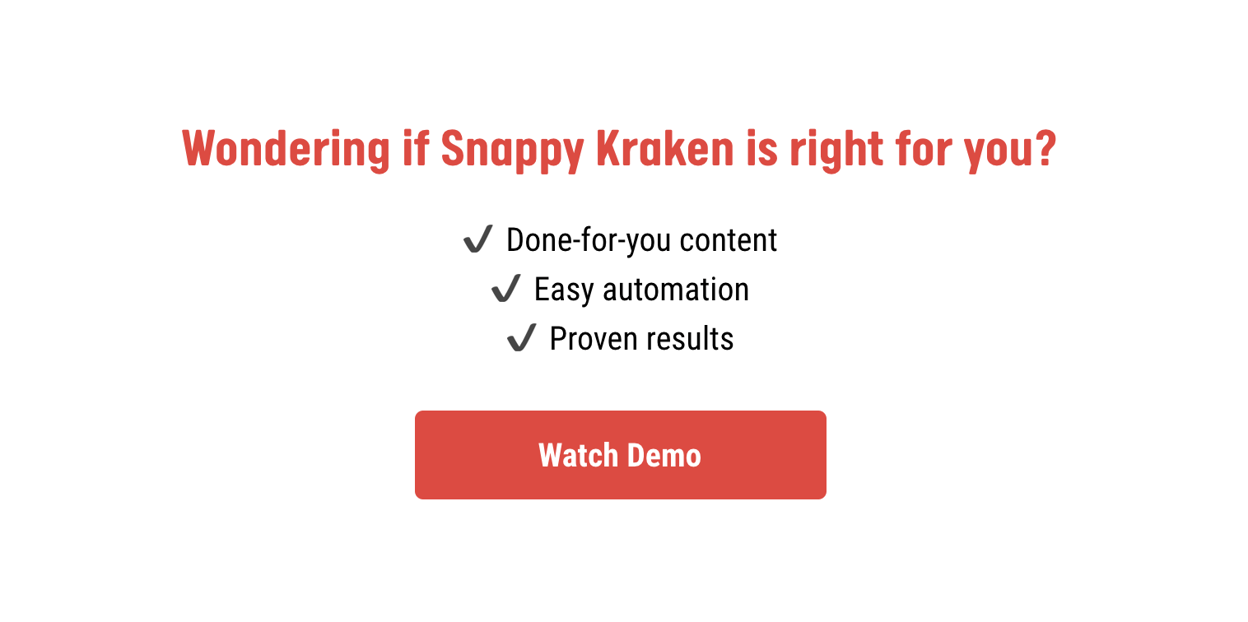Do Privacy Changes Affect Your Marketing’s Effectiveness?

When COVID-19 first impacted the U.S., “The Late Show with Stephen Colbert” had to go without an audience. In lieu of laughter and cheers from an engaged crowd, Colbert told his jokes to an empty room—and, as empty rooms do, it didn’t laugh or clap back.
But just because Colbert couldn’t get feedback from a live audience, it doesn’t mean his viewers weren’t enjoying his content. In fact, people were still watching Colbert's show as much as they did pre-COVID-19.
The reason? With or without feedback, good content is good content. Colbert’s target audience continued to enjoy his show, laugh at his jokes, and probably clap the way they used to—whether he saw them doing so or not—because the content was still good. Good content doesn’t rely on feedback because it’s focused on what the client wants, not what they bring to the transaction.
And that’s good news because tech giants like Apple and Google have started prioritizing consumer privacy. This means our marketing efforts may yield less feedback at certain stages of the sales funnel. We won’t be able to track email open rates, click-through rates, and other metrics as accurately as we once did—but that doesn’t have to mean the end of lead generation.
Focus on tailoring your content to your target audience—as Colbert did—and the lack of data won’t derail your marketing results.
Prepare for Marketing in the “No Data” World by Going Back to Basics
Okay, we’re exaggerating a little bit—you won’t get absolutely zero data, just less specific data. But that doesn’t mean your marketing efforts will fail. All you need to do is change your strategy a bit. Instead of worrying about having less data, double down on making your content more relatable, engaging, thought-provoking, and compelling.
Tracking an internet user’s behavior through cookies—what they click, watch, ignore, and re-watch—was already becoming more difficult because the European Union (EU) instituted the General Data Protection Regulation (GDPR) in 2016, forcing companies to ask for user consent before tracking. With the changes to data collection by bigger companies, targeting is getting even less accurate, as evidenced by giant ad platforms like Facebook and Twitter already losing revenue.
Without cookies, we may not see the whole picture of how well-received our marketing efforts are. The good news is that even without data, marketing fundamentals stay the same: You need to create content that your target audience wants to hear and can relate to, that achieves a certain goal, and then distribute that content through the right channels.
1. Learn More About Your Target Audience
The key to creating relatable content is having a clear idea of who your target market is (i.e., the people you want your marketing to reach). Luckily, you already have that data in the form of your existing clients. Some (if not most) of your client base probably fall into the ideal client category, so all you need to do is tap into that wealth of information.
The best approach to learning more about your target audience is simple: Talk to them. Ask your existing clients questions that will help you learn more about what they like, don’t like, and want to hear from you. You can do that by:
- Setting up one-on-one feedback calls
- Conducting quick survey platforms
- Starting conversations by asking questions through email
- Setting up focus groups
.png?width=643&name=Image%201%20(3).png) Clients have different interests and affinities, and if you know what those are, you can better target your client base.
Clients have different interests and affinities, and if you know what those are, you can better target your client base.
To uncover these affinities and interests, ask your ideal clients questions like:
- What’s your educational background?
- What’s your dream career?
- What’s your current job title?
- What are your biggest financial challenges?
- What does success look like to you?
- What are your biggest fears?
- What social networks are you on?
- How do you prefer to communicate?
- How can I help?
You don’t need to ask all those questions at once, but having that information will help you craft content that directly answers your target audiences’ questions and addresses their needs.
2. Clearly Define Your Marketing Goals
You don’t create marketing campaigns because it’s fun; you create marketing campaigns to achieve a specific objective. If your goal is to reassure your potential clients about changes in the financial market, you can’t create an ad that sells insurance plans. On the flip side, if you want to get more pre-retiree leads, you need to create an ad campaign that speaks to pre-retirees pain points and invites them to fill out a lead form.
Some marketing goals include getting more leads, building relationships with your prospects, or getting more calls booked. There are also other goals, like increasing event attendance or converting more leads into clients. It’s up to you to define what success means for your business. Then, set a marketing goal for each campaign you create based on your desired outcome.
See how financial advisers and their assistants rate our digital marketing content, tools, and support.
Wondering if Snappy Kraken is right for you?
3. Craft Relatable and Effective Messages
After you’ve set your campaign goals, it’s time to craft relatable messages and content. Think about the subject lines you’ve seen that made you open an email. Or images that made you want to know more about a certain website or social media account. That’s the kind of content you want to create because it’s relatable and effective.
In the example from the previous section, we gave three common marketing goals. For inspiration, we’ve outlined a different campaign to achieve each goal.
- Getting more leads. To get more leads, you need to build out content that grabs attention, educates, and offers something in exchange for contact details. For example, one of our lead generation campaigns targeted at parents asks for contact details in exchange for a free guide with three strategies on how to set their children up for financial stability.
- Building relationships with your prospects. Nurturing your prospects by sending them emails that aim to build a relationship will help you turn your existing prospects into clients. One of our nurturing campaigns, for instance, runs over a period of eight weeks and is designed to educate prospects on the value of working with a financial professional. That way, they see the value in your services and are more likely to hire a planner rather than go the DIY route.
- Getting more booked calls. When a prospect books an appointment, it’s a good indication that they are one more step closer to becoming a client. Our campaigns that aim to get readers to book more appointments address pain points and use emotions to get people to click that “book now” button.
Always keep your target audience and marketing goals in mind as you create your campaigns so that your content resonates with the people you’re trying to reach.
4. Choose the Right Marketing Platforms
Choosing the right marketing platforms for your content is just as important as crafting a relatable message. For example, a post targeted at pre-retirees won’t reach nearly as many people on TikTok as it would on LinkedIn or Facebook.
Simply put: Different target markets hang out on different platforms. For example, more teenagers and young adults are on YouTube and Instagram compared to Tumblr and LinkedIn. Baby boomers, on the other hand, more often hang out on Facebook. That’s not to say there aren’t outliers. Tori Dunlap, Founder of Her First $100K, for instance, targets her millennial audience through TikTok and has found massive success on the platform.
Choose the marketing platform that reaches your audience the best that you’re comfortable creating content for.
Continue Reaching Your Target Audience (And Generating Leads) With Content-First Marketing
At Snappy Kraken, our content is our secret weapon. We create consistently amazing content that resonates with your target audience, and the data proves it.
.png?width=596&name=Image%202%20(2).png) In our 2021 State of Digital Marketing Report, we found that the average Snappy Kraken member gets better results compared to the rest of the financial industry.
In our 2021 State of Digital Marketing Report, we found that the average Snappy Kraken member gets better results compared to the rest of the financial industry.
Our average email open rate, click-through rate (i.e., how many people clicked on the links in your email compared to the number of people who opened it), and landing page conversion rates are always consistently higher when compared to industry averages.
We’re sharing our top secrets with you, but feel free to check out our Cold to Gold Framework for a more comprehensive guide.
“Stop the Scroll” With Thought-Provoking Graphics
Whether you’re creating content for social media, email, or landing pages, your goal is to grab attention so that your readers aren’t scrolling past your content without giving it a second look. You can do that with colors, interesting photos, or other graphics that speak to your target audience.
One of our members, Ritika, marketing coordinator at a wealth management firm licensed in multiple states, has seen the effects of content that stops the scroll. “The graphics in [Snappy Kraken’s] campaigns are amazing,” she told us. “The platform is easy to navigate and track. Finally, one click, and you are set for a month, making marketing easier, quicker, and effective.”
.png?width=627&name=Image%203%20(1).png)
Instead of using stock photos as most financial advisers do, use illustrations that make them want to learn more. Social media ads and posts with surprising images get more clicks (and thus, more leads).
.png?width=901&name=Image%204%20(2).png) We designed this comic strip to be both relatable and reassuring.
We designed this comic strip to be both relatable and reassuring.
Add photos to your emails that tell relatable stories. We used the comic strip above in our Gratitude and Empathy email campaign at the start of the pandemic. The goal is to help advisers show their prospects and clients that they’re facing the same problems while working from home.
Create Cohesive Campaigns for Different Audiences
Cohesive campaigns that nurture and empathize with your prospects and clients over a length of time take your different target audiences on full journeys, from prospect to client to loyal advocate. For example, our lead generation campaign on retirement success is targeted at pre-retirees and runs for four weeks. Our lead generation campaign on the perfect investment cocktail, on the other hand, is targeted at high-net-worth individuals (HNWIs) and also runs over four weeks.
.png?width=876&name=Image%205%20(1).png) We did the research and found that even your best-performing campaign will only reach around a fifth of your potential reach.
We did the research and found that even your best-performing campaign will only reach around a fifth of your potential reach.
It’s important to have a variety of campaigns for your different target audiences because even your best-performing content will still only reach around 23% of your potential clients. You likely have multiple target audiences: first-time parents, pre-retirees, entrepreneurs, HNWIs, and so on. If you only have one campaign, you’re leaving people out.
Our campaigns run over just the right amount of time because marketing isn’t a one-and-done deal. After you generate a lead, you need to nurture that lead so that they decide to become a client.
Set Yourself Up for Success With Snappy Kraken
We spend hours on each of our campaigns to make sure that they work for our members—financial advisers who want to generate leads, get clients, and build relationships. We save you time, effort, and money while getting you better results from your marketing.
Become a member today to get content-first marketing campaigns that win you clients and keep them loyal to your business.
Book A Demo Today
Discover how Snappy Kraken helps advisors grow with a powerful marketing system
Request a demo


